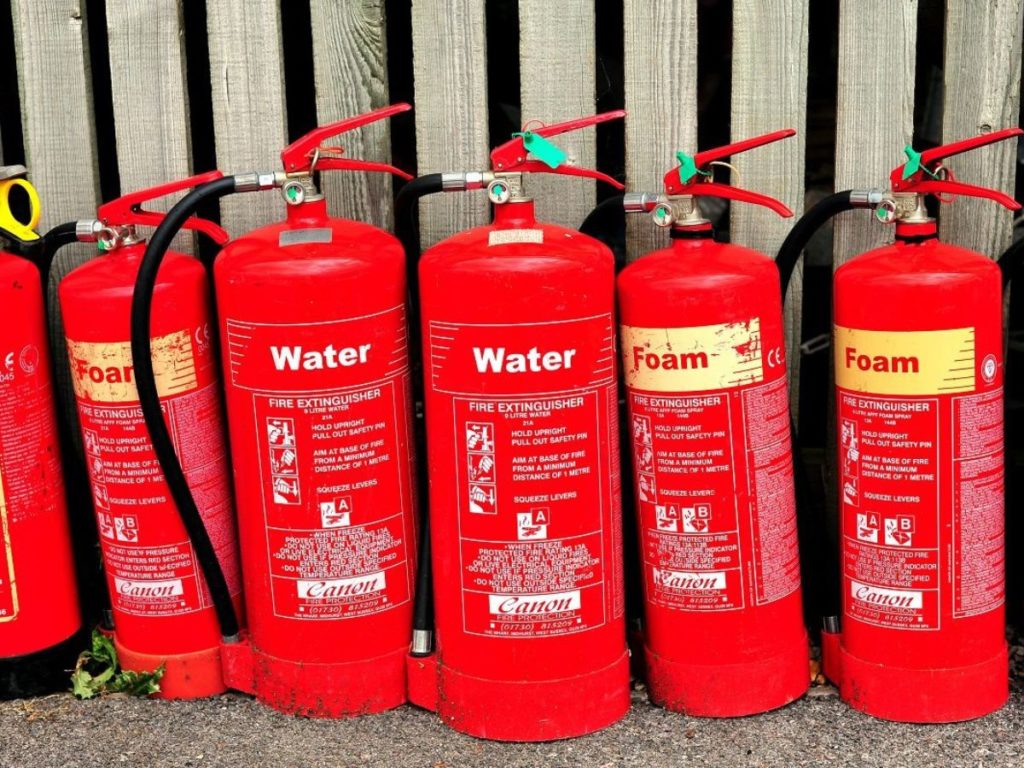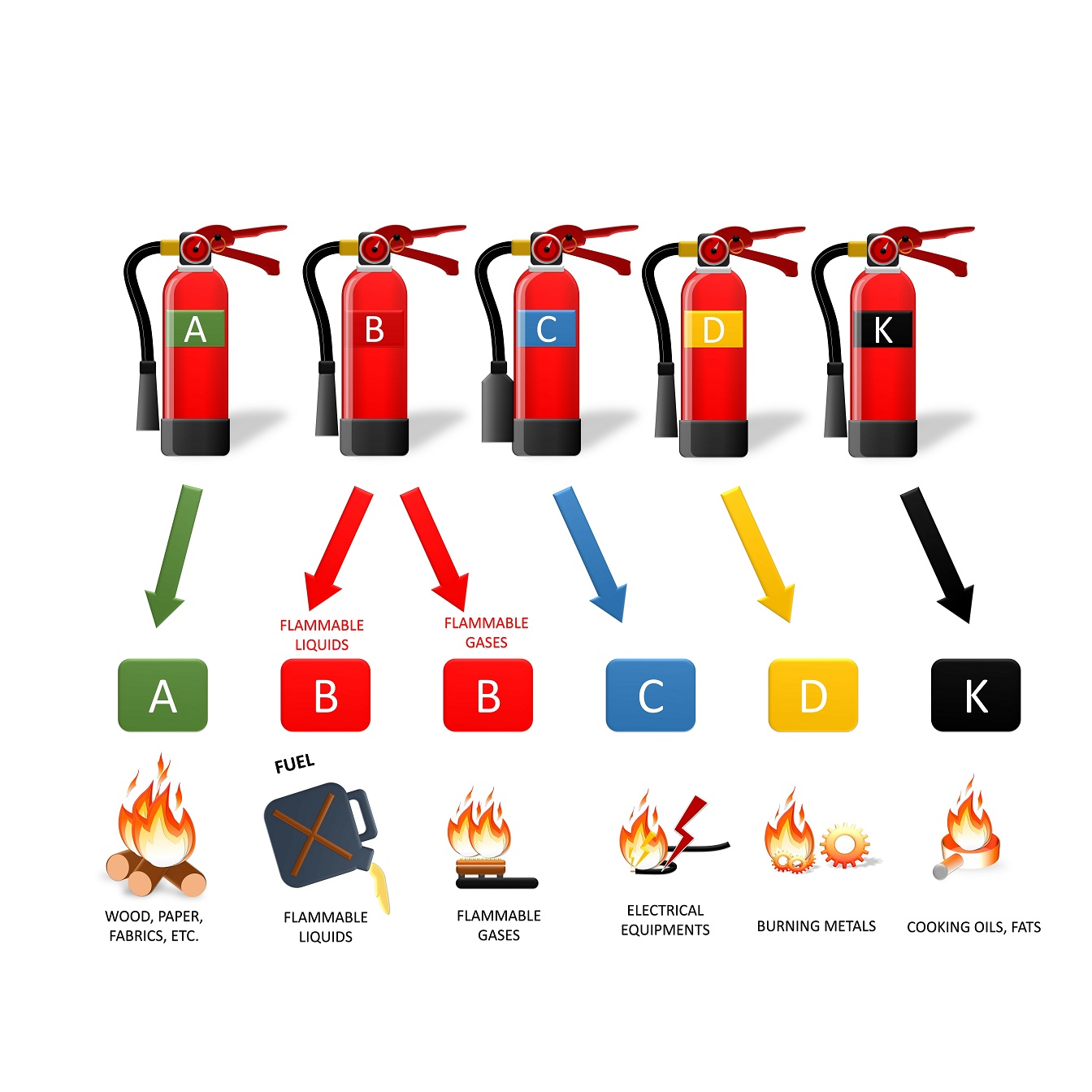Fires can be unpredictable and dangerous, causing damage to property and endangering lives. That’s why it’s important to have a plan for dealing with fires, including understanding how to use a fire extinguisher. In this article, we’ll explain the different types of fire extinguishers, how to use them safely and effectively, and how to maintain them. This information can help you better prepare for a potential fire emergency at home, in the workplace, or elsewhere.
Types of Fire Extinguishers Fire extinguishers are classified according to the fire they are designed to extinguish. Therefore, the type of fire extinguisher you need depends on the fire you’re facing. Here are the primary types of fire extinguishers:
- Class A fire extinguishers are suitable for fires involving ordinary combustibles such as wood, paper, and cloth. They contain water or foam as the extinguishing agent to extinguish the fire. It’s important to use the correct fire extinguisher for the fire you’re dealing with to avoid worsening the situation.
- Class B fire extinguishers are designed for fires involving flammable liquids such as gasoline, oil, or grease. These types of fires can be dangerous because they can quickly spread if not extinguished promptly. Class B fire extinguishers use chemicals such as carbon dioxide or dry chemical powder to suppress the fire by smothering the flames and cutting off the fire’s oxygen supply. Using the correct type of extinguisher for Class B fires is crucial, as using the wrong type can worsen the situation.
- Class C fire extinguishers are specifically designed for fires involving electrical equipment. These fires require extinguishers that use non-conductive agents such as carbon dioxide or dry chemical powder to suppress the flames effectively. It’s important to note that using water-based extinguishers on electrical fires can cause electrocution, so having the appropriate Class C extinguisher on hand in areas with electrical equipment is crucial.
- Class D fire extinguishers are designed to handle fires involving combustible metals such as magnesium and titanium. The extinguishing agents used in these fire extinguishers are different from those used in Class A, B, and C extinguishers, as they are designed to react with the metal to create a crust that seals off the surface and prevents further burning. It’s important to never use water or other traditional extinguishing agents on Class D fires, as they can react explosively with the metal and make the situation worse.
- Class K fire extinguishers are designed for fires involving cooking oils and fats commonly found in commercial kitchens. These types of fires can be difficult to extinguish because water and traditional fire extinguishers worsen the situation. Class K extinguishers use special chemicals like potassium acetate or potassium citrate to suppress the fire and prevent re-ignition effectively. It’s important to have a Class K extinguisher in any commercial kitchen or cooking area to prevent potentially catastrophic fires.
Choosing the correct fire extinguisher for the type of fire you’re dealing with is crucial. Using the wrong type of fire extinguisher can exacerbate the situation, so it’s vital to know which type to use in each circumstance. Fortunately, using a fire extinguisher is a simple process that can master with some practice and understanding. The PASS acronym is a helpful reminder of the steps involved in using a fire extinguisher:
- Pull the pin: Start by pulling the pin at the top of the fire extinguisher, which releases the locking mechanism, enabling you to discharge the extinguisher.
- Aim at the base of the fire: Aim the nozzle or hose at the base of the fire, not the flames themselves. Doing so will help extinguish the fire at its source.
- Squeeze the handle: Squeeze the handle to discharge the extinguishing agent. Use a sweeping motion from side to side to cover the entire fire area.
- Sweep the nozzle or hose from side to side: Keep sweeping the nozzle or hose from side to side until the fire is completely extinguished. Monitor the area to ensure the fire doesn’t reignite.
Remember to use a fire extinguisher only on small, easily contained fires. If the fire is too large or quickly spreads, evacuate the area and contact the fire department.
Tips for Using a Fire Extinguisher Effectively and Safely.

A fire extinguisher can be a simple yet effective way to control a small fire. To ensure its proper usage, it’s essential to follow some helpful tips. Here are a few things to keep in mind when using a fire extinguisher
- Know the location of the nearest fire extinguisher before an emergency arises.
- Only use a fire extinguisher if you’ve been trained to do so and if it’s safe.
- Ensure you have the appropriate fire extinguisher for the fire you’re dealing with.
- Position yourself safely from the fire but close enough to aim the extinguisher accurately.
- After using the extinguisher, observe the fire for several minutes after using the extinguisher to ensure it doesn’t reignite.
In conclusion, knowing how to use a fire extinguisher effectively and safely is crucial, as it can make a significant difference in the event of a fire. Using the wrong type of extinguisher can worsen the situation, so it’s important to understand the types of fires and the appropriate extinguisher to use in each case. Remember to use a fire extinguisher only on small, easily contained fires, evacuate the area and contact the fire department for more significant or quickly spreading fires. Always keep a fire extinguisher handy, know its location, and ensure it’s in good working order. Using a fire extinguisher and regularly refreshing your knowledge can help you respond confidently in an emergency. With these tips in mind, you can help prevent a small fire from becoming devastating.
